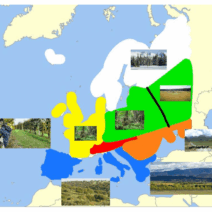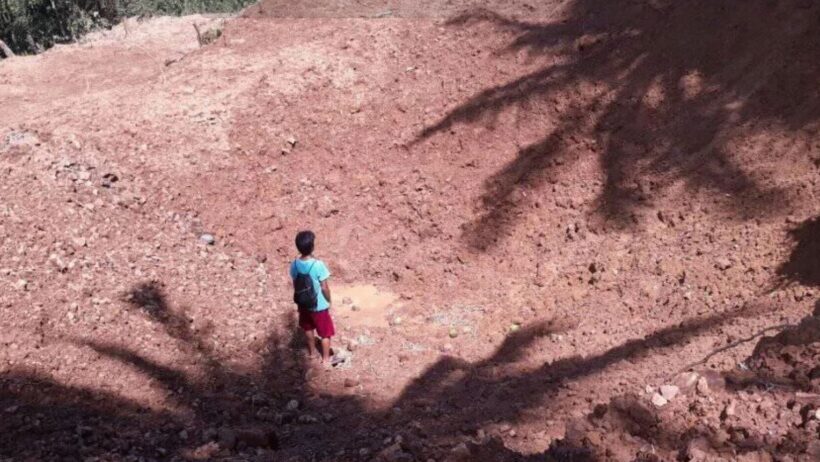Biodiversity is the bedrock of ecological resilience, influencing not only the health of ecosystems but also our very survival as a species. With climate change accelerating at an alarming rate, plant communities are finding themselves in a precarious situation, one that threatens their very existence. In this discourse, we will unpack the myriad ways in which warming climates and associated phenomena jeopardize plant diversity, the consequences for global ecosystems, and the pressing need for strategic interventions to safeguard these critical communities.
To comprehend the gravity of the situation, it is essential to first delineate what biodiversity entails and why it is pivotal for the sustainability of our ecosystems. Biodiversity encompasses the variety of life forms within a given ecosystem, including the diversity of species, genetic variability, and the ecological processes they engage in. Healthy plant communities provide a multitude of benefits, including oxygen production, carbon sequestration, and habitat for myriad species. However, with the encroaching specter of climate change, these vital functions are increasingly under siege.
One of the most profound threats to plant biodiversity arises from temperature anomalies attributed to climate change. As global temperatures rise, plant species that thrive in specific climatic conditions are facing dire consequences. Many flora are already exhibiting shifts in their geographical ranges. For instance, temperate species are migrating northward, while alpine plants are ascending to higher altitudes in search of cooler conditions. The shift in biogeographical patterns disrupts intricate ecological interdependencies, potentially leading to the local extinction of flora that cannot adapt or relocate.
The minimum temperature thresholds that many species have evolved to withstand are not arbitrary. These thresholds dictate flowering times, seed germination cues, and various other phenological events. A warming climate exacerbates this delicate balance. Early blooms may occur, leading to mismatches with pollinators, which could jeopardize reproductive success. Moreover, the cumulative effects of temperature increases can result in reduced plant growth and diminished resilience against pests and diseases, further diminishing biodiversity.
The interaction between climate change and extreme weather events adds a further layer of complexity. Fire, drought, flooding, and storms—the harbingers of climate change—are increasing in frequency and intensity. These events can devastate entire communities of plants, obliterating not only the species present but also the genetic diversity that underlies resilience. For instance, forest fires can reshape landscape dynamics, creating a cycle of vulnerability where affected areas remain susceptible to invasive species that thrive in the vacated ecological niches.
Soil health is another crucial element that intersects with climate conditions and biodiversity resilience. Healthy soils enhance plant growth, but climate change is leading to degradation through erosion, loss of organic matter, and nutrient depletion. This decline poses an existential threat to many plant communities that rely on rich, intact soils for sustenance. Moreover, changing precipitation patterns can lead to water scarcity or waterlogging, adversely affecting plant health. The interplay of these factors creates a feedback loop, where declining plant diversity further exacerbates soil degradation, thus compounding the original problem.
Invasive species play another critical role in this narrative. As climate conditions shift, the susceptibility of native plant communities to invasives intensifies. Non-native species often exhibit rapid growth and reproduction, outcompeting delicate native flora. The introduction of these species alters ecological dynamics, leading to homogenization of landscapes and loss of endemic biodiversity. The consequences of such displacement are dire; they can severely impair the ecosystem services that native plants provide, such as nutrient cycling, water regulation, and habitat support.
Addressing the threats faced by plant communities in a warming world necessitates comprehensive, multi-faceted strategies that interconnect conservation, restoration, and sustainable management practices. Protected areas must adapt to encompass not only current biodiversity but also anticipate future species distributions due to climate impacts. Conserving genetic variation within plant populations is vital for fostering resilience and enabling adaptive responses to changing conditions.
Restoration ecology offers promising pathways for revitalizing degraded ecosystems. Initiatives aimed at reintroducing native species, controlling invasives, and restoring hydrological regimes can help mend the fabric of disrupted plant communities. By employing diverse planting strategies, land managers can enhance ecological resilience while simultaneously providing for the needs of local communities.
Moreover, raising awareness and fostering community engagement in conservation efforts can mobilize support and resources for biodiversity initiatives. Education on the importance of plant diversity to our overall ecological health, alongside practical actions—reforestation, native planting, and habitat protection—can counteract the tide of decline.
In summation, biodiversity is not merely an abstract concept but a tangible asset that underpins the survival of our planet’s intricate web of life. As we grapple with the reality of climate change, understanding the plight of plant communities and their central role in perpetuating ecological health is crucial. The fate of biodiversity lies not just in the hands of the policymakers, but in the collective efforts of individuals, communities, and organizations committed to fostering a sustainable future. Embracing this challenge with urgency can lead to a future where biodiversity thrives, not just survives.






